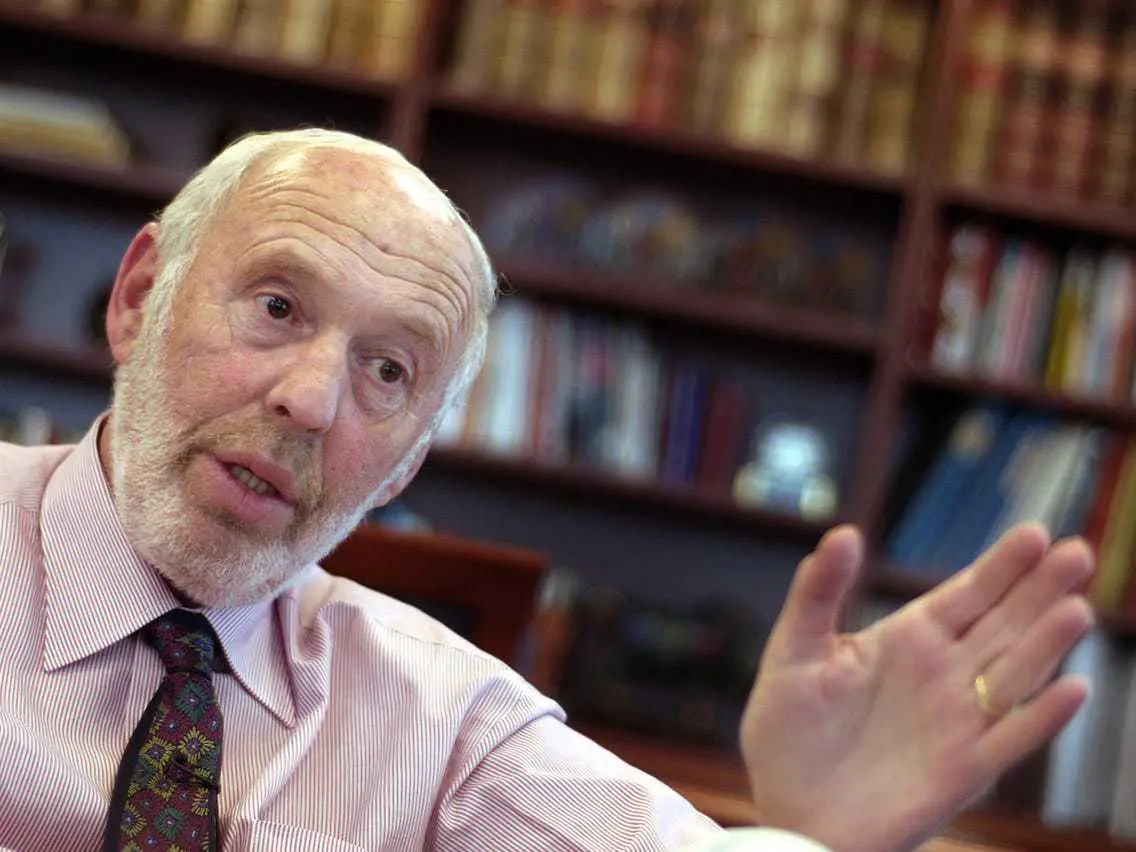Jim Simons is an American hedge fund manager, investor, mathematician, and philanthropist who founded Renaissance Technologies, a leading quantitative hedge fund. Recognized for capitalizing on market inefficiencies through mathematical models, he’s often labeled the most successful hedge fund manager ever. With an estimated net worth of $30.7 billion, he ranks among the world’s wealthiest individuals.

Beyond finance, Simons has significantly contributed to mathematics and physics, notably in pattern recognition and the Chern–Simons form, intertwining geometry, topology, and quantum field theory.
Jim Simons’s net worth is $30.7B in 2023. Jim Simons is in the top 20 wealthiest people in the United States.
Jim Simons video:
He is also known as the Quant King. He has started one of the most successful and popular quant funds in the world. He is a self-made billionaire. Apart from this, he is a philanthropist as well. He is very popular and well-known for his quantitative investment. In the year 1982, he founded Renaissance Technologies. It was a private hedge fund in New York City. Simons took retirement from the fund in the year 2009. But he maintains his position of non-executive chairman and advisor as well. He got success in mathematics and figured out the code-breaking as well. He also built a top-class department at Stony Brook University.
He is very famous for his valuable and essential studies on pattern recognition. He developed the Chern-Simons form. He was a mathematician professor from the year 1968 to 1978. He held the chair of a mathematics professor at Stony Brook University. As of the year 2018, his net worth was $20 billion.
Jim Simons Education
James Harris Simons, born on April 25, 1938, to Marcia and Matthew Simons in Brookline, Massachusetts, comes from a Jewish American heritage. His journey into mathematics began at the prestigious Massachusetts Institute of Technology (MIT), where he earned a bachelor’s degree in the subject in 1958. Demonstrating his adventurous spirit, after completing his studies at MIT, he undertook a daring journey from Boston to Bogotá, Colombia, on a motor scooter.
Furthering his academic pursuits, Simons earned a Ph.D. in mathematics from the University of California, Berkeley, in 1961, under the guidance of Bertram Kostant, at the impressive age of 23. His doctoral thesis provided a novel proof of Berger’s classification of holonomy groups in Riemannian manifolds, laying the groundwork for his future contributions to geometry and topology.
Education:
- Born: April 25, 1938, in Brookline, Massachusetts.
- Family Background: Jewish American.
- Bachelor’s Degree: Mathematics from MIT, 1958.
- Travel: From Boston to Bogotá, Colombia, on a motor scooter post-MIT graduation.
- PhD: Mathematics from the University of California, Berkeley, 1961, under Bertram Kostant.
Scientific and Academic Career:
- Mathematical Achievements:
- Focused on the geometry and topology of manifolds.
- Presented a new proof of Berger’s classification of holonomy groups of Riemannian manifolds in his PhD thesis.
- She collaborated with Shiing-Shen Chern, leading to the discovery of the Chern–Simons secondary characteristic classes for 3-manifolds.
- Influence on early topological quantum field theory and its relation to the Yang-Mills functional on 4-manifolds.
- Awards & Recognitions:
- Received the AMS Oswald Veblen Prize in Geometry, 1976.
- Elected to the U.S. National Academy of Sciences in 2014.
- National Security & Code-breaking:
- Collaborated with the National Security Agency in 1964 for code-breaking.
- Worked at the Communications Research Division of the Institute for Defense Analysis (CRD of IDA) between 1964 and 1968.
- Assisted IBM in 1973 to decipher the block cipher Lucifer, a precursor to the Data Encryption Standard (DES).
- Teaching & Academic Positions:
- Taught mathematics at both MIT and Harvard University.
- Joined Stony Brook University faculty post-IDA exit due to opposition to the Vietnam War.
- Served as the chair of the math department at Stony Brook University from 1968 to 1978.
- Philanthropy & Initiatives:
- She founded Math for America in 2004, aiming to improve mathematics education in U.S. public schools by recruiting highly qualified teachers.
A notable collaboration in Simons’ academic career was with Shiing-Shen Chern, with whom he explored the theory of characteristic classes. Their joint work led to the discovery of the Chern–Simons secondary characteristic classes for 3-manifolds. This groundbreaking work would later find its application in physics when mathematical physicist Albert Schwarz utilized it in early topological quantum field theory. The Chern–Simons form, which emerged from their collaboration, also had implications for the Yang-Mills function on 4-manifolds, profoundly influencing the course of modern physics.
For his significant contributions, especially to geometry and topology, Simons was honored with the AMS Oswald Veblen Prize in Geometry in 1976. Later, in 2014, in recognition of his myriad achievements, he was elected to the U.S. National Academy of Sciences.
But Simons’ academic journey wasn’t limited to mathematics and its applications. In 1964, he collaborated with the National Security Agency, lending his expertise in code-breaking. This was followed by a stint from 1964 to 1968 at the Communications Research Division of the Institute for Defense Analysis (CRD of IDA). Concurrently, he imparted knowledge as a mathematics professor at MIT and Harvard University.
His public dissent against the Vietnam War led to his exit from the IDA. Following this, he embraced a new academic role at Stony Brook University. Serving as the chair of its math department from 1968 to 1978, Simons shaped its academic trajectory.
In a unique venture outside academia, IBM in 1973 approached Simons to decipher the block cipher Lucifer, a precursor to the now well-known Data Encryption Standard (DES).
One of Simons’ most notable philanthropic endeavors aimed at education was the foundation of Math for America in January 2004. This nonprofit organization’s mission was to elevate mathematics education in U.S. public schools, chiefly by ushering in a wave of highly qualified math teachers.
From MIT to Stony Brook, from geometric manifolds to the intricate world of code-breaking, Simons’ educational and academic journey is a testament to a lifetime of relentless curiosity and dedication to the pursuit of knowledge.
























